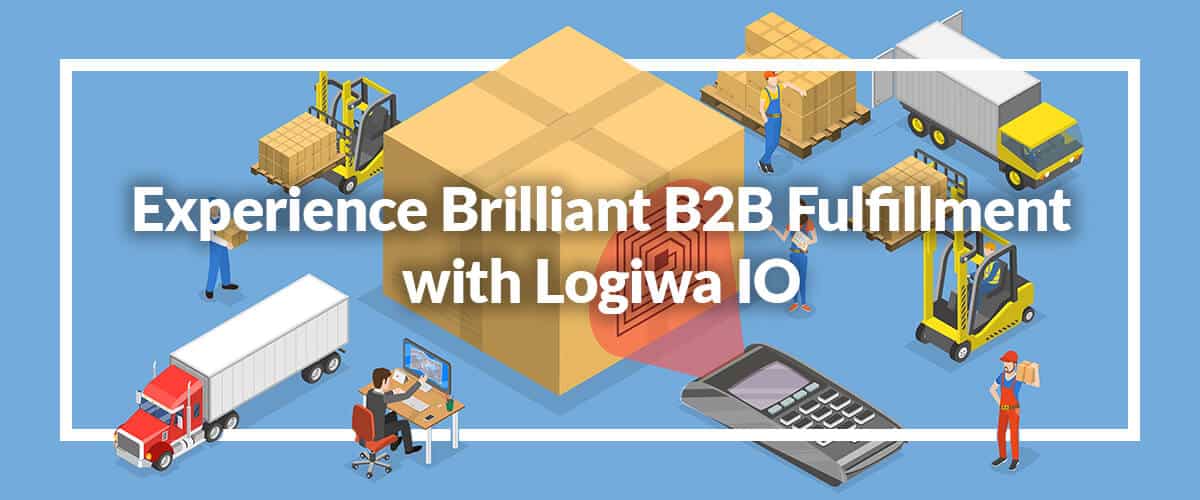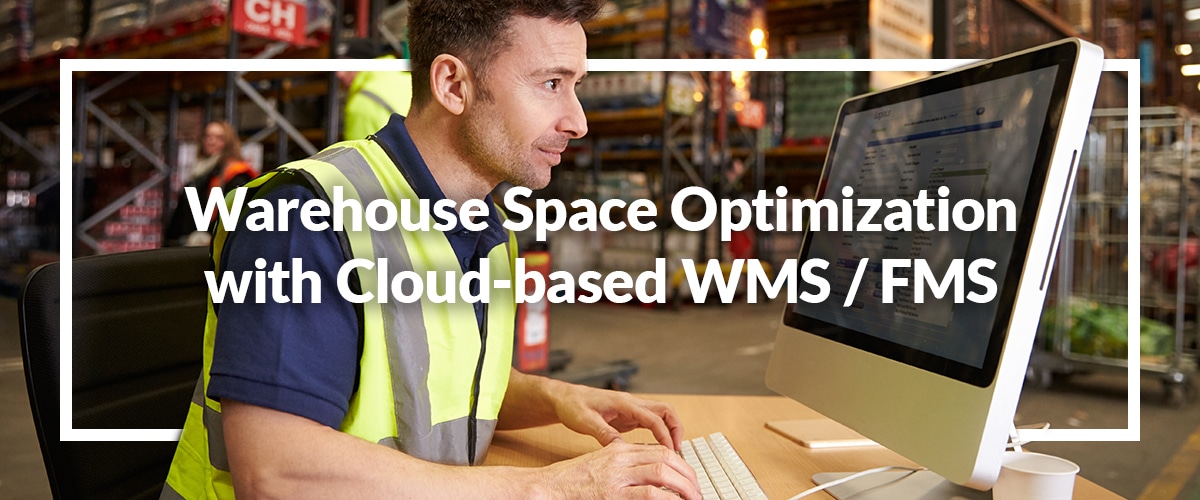RFID in Supply Chain
Originally published on August 27, 2019 by Logiwa Marketing, Updated on April 15, 2024
In this article, we’ll dive into the role of Radio Frequency Identification (RFID) technology in supply chain management, demystifying its importance, potential benefits, costs, and challenges. We’ll discuss how RFID can solve significant supply chain problems, highlight its diverse applications in various sectors, and provide insight into real-life case studies to illustrate the technology’s effectiveness and versatility.
Key Takeaways:
- RFID technology can drastically enhance data collection, operational efficiency, and security within supply chain management, providing visibility and control over every moving part.
- Although the initial investment in RFID can be high, its benefits often result in considerable return on investment over time, especially in certain industries such as fashion, healthcare, and cosmetics.
- RFID can greatly improve integration, operations, purchasing, and distribution in the supply chain, providing real-time tracking, data sharing, and inventory management.
- The successful use of RFID is highly dependent on the nature of the industry and the specific goods being handled, as some materials can interfere with RFID readability.
- Despite its benefits, RFID technology does come with potential drawbacks, including security concerns, privacy issues, and high upfront costs.
RFID in supply chain: an unnecessary expense or the answer to all your supply chain management problems?
RFID offers exciting possibilities. It solves some of the biggest problems in supply chain management, like:
- Collecting, managing, and analyzing large sums of data
- Keeping labor costs low
- Optimizing operational costs
- Using working capital effectively
- Mitigating security risks
- Adhering to regulatory and compliance standards
Of course, RFID tech is an up-front investment and it’s not a cheap one. The cost of RFID has come down significantly over the past couple of decades, making it more attractive for downstream retail operations. However, it’s still important to assess exactly how RFID can deliver the most bang for your buck.
Before implementing an RFID solution in supply chain, assess your budget and define your business goals and priorities.
Approaching RFID this way helps you process all the dazzling applications of RFID in context. Because the truth is: RFID is pretty cool, and it brings the serious potential to transform your business, but it all comes at a cost.
In this guide, we’ll help you understand:
BONUS: Before you read further, download our Warehouse Management Whitepaper to see how Logiwa uses real-time data to help you get up to 100% inventory accuracy and execute advanced fulfillment strategies like wave planning.
A Rundown of RFID Technology
RFID uses radiofrequency waves to transfer data wirelessly and without contact.
So, what’s the difference between RFID and barcodes?
A barcode is a set of black and white lines, which represent information. A barcode has special anatomy that, when scanned with a laser, allows computers to make sense of it and understand the difference between a box of cake mix and a box of brownie mix.
Functionally, barcodes are different from RFID scanners because the scanner needs a line of sight to the barcodes. RFID scanners don’t need a line of sight—they communicate with the RFID tags on items without needing to see them individually.
This alone is a mouthwatering proposition for warehouse managers and global supply chain executives. Imagine slashing your receiving time by checking inventory without opening every box to scan individual items or being able to easily track fast-moving goods in your warehouse. An RFID tag ensures a manufacturer can track every single part it uses in its goods, providing visibility over every moving part in the supply chain.
The wondrous world of RFID tech extends well beyond supply chain management.
At Wells Fargo data centers, RFID scanners in laptops indicate whether a computer is leaving with its rightful owner, preventing data breaches and thefts. At a chain of popular kaiten-sushi restaurants in Seattle, where dishes circle on a conveyor belt for customers to grab, the owners use RFID to keep tabs on the freshness of food circling around. Meanwhile, a legal office in Washington D.C. uses RFID tags to manage more than 20,000 paper files.
In other words, RFID, with its multitude of uses, helps companies maintain control in a chaotic, fast-moving world.
How Businesses Incorporate RFID Into The Supply Chain
The supply chain consists of four elements, each of which presents an opportunity to leverage RFID technology:
- Integration
- Operations
- Purchasing
- Distribution
Integration
Good integration—communication and information sharing— is key to a successful supply chain, especially a global supply chain. Failing to integrate your supply chain is like trying to run a restaurant where the servers have to fill out four forms to submit an order to the kitchen staff. It makes no sense, and it won’t get you very far.
It’s simply ludicrous not to integrate your supply chain. The easier it is to share information between suppliers, warehouses, and transportation companies, the smoother your supply chain moves goods. A tighter supply chain is a stronger supply chain.
With RFID technology, sharing and accessing data is easier. RFID tags allow organizations to quickly account for goods in transit and capture data about them, which is then shared with other supply chain partners.
Some companies require suppliers to use RFID technology, making it a worthy investment for businesses who want to win bigger clients.
When RFID Fails
Even so, RFID technology is not a perfect solution for integrating supply chain operations in every industry.
For example, in 2003, Wal-Mart mandated all suppliers include RFID tags on its shipments within 18 months for its top 100 suppliers and by the end of 2006 for its remaining suppliers. The project ultimately failed, primarily because there didn’t seem to be a discernible benefit. Since RFID doesn’t pass through metals and liquids, the highly accurate read rates promised by RFID tech didn’t materialize.
In other words: It didn’t seem all that much different from barcodes.
RFID technology is well suited for industries whose products don’t interfere with RFID readability, such as:
- Fashion and apparel
- Cosmetics
- Jewelry
- Healthcare and pharmaceuticals
Operations
Day-to-day operations can make or break a company’s supply chain. A famous quote captures it like this: “We are what we repeatedly do. Excellence, then, is not an act, but a habit.” Supply chain managers who focus on excellent day-to-day operations build a supply chain that is greater than the sum of its parts and that achieves two key objectives simultaneously:
- Reduce operational costs
- Increase revenue
Performance data allows supply chain managers to understand how well they are functioning on a daily basis. Which processes are improving worker productivity? Where are more processes needed? Where are there unseized opportunities?
RFID scanners help companies easily monitor how goods move through their warehouses. Inventory management becomes significantly more efficient since companies receive real-time information about what’s in the warehouse, what’s on its way to the warehouse, and what’s been sent to customers.
RFID integrations with supply chain management system allow enterprises to receive real-time information while integrations with warehouse control systems (WCS) provide the future possibility of drone capabilities. What could this look like? Essentially, drones would fly around warehouses capturing data from a few centimeters away to keep track of inventory. While we’re still some time away from widespread adoption of this practice, it’s an exciting indication of the potential of RFID technology in warehouses.
RFID and Fast Fashion
Zara is an example of a well-known company that’s used RFID tags to achieve operational excellence. As a fast-fashion retailer, Zara’s entire business model relies on its ability to deliver cost-effective alternatives to trendy, pricier pieces. One of the major drawbacks of this business model is that trends come and go, but suppliers may need a few months’ notices to produce enough inventory.
To keep track of its massive inventory in real-time, the global retailer uses RFID tags across the supply chain. Zara encodes garments from the manufacturing stage, enabling end-to-end tracking. Inventory managers can easily check whether items are out-of-stock, while also enabling Zara to respond quickly to fast-selling items and produce more. It’s also worth mentioning that Zara manufactures its own clothing.
Better Warehouse Performance = Higher Profit Margins: Logiwa syncs accurate data across your entire interface so the inventory numbers you see on your dashboard are what your employees see on their devices. Learn how Logiwa uses real-time data to help you get up to 100% inventory accuracy and 2.5x shipments.
Purchasing
It’s impossible to manufacture the goods you need if you can’t acquire the necessary raw materials. That’s what makes purchasing such an important part of the supply chain process. Whether you’re making clothes, fast-moving consumer packaged goods, or computers, you need the component parts to create the final product.
Working with suppliers who have RFID technology gives you real-time visibility over in-stock raw materials and semi-finished materials. RFID also allows you to quickly check whether everything you’ve ordered is in a given shipment, which minimizes the amount of time spent at the receiving stage and helps move items to the production stage sooner.
Finally, RFID can provide some protection in case there are defects in raw materials. For example, suppose one of your food suppliers announced contamination in one of the raw materials you use. If you and your supplier use RFID technology, you can use your data to identify which final products used that raw material. Customers are protected and your company’s compensation from that supplier is sped up as well.
Distribution
Logistics refers coordination and movement of goods from the point of origin to the point of consumption. Good logistics make distribution possible, whether it’s the distribution of raw supplies to manufacturers, the distribution of finished goods to warehouses, or the distribution of individual items to consumers. For companies moving goods, it’s critical to maintain quality control, meet agreed-upon service levels, keep costs low, and more.
All of this relies on the timely and accurate transmission of information.
If there’s severe weather near your suppliers, it’s important to know the status of your goods. Have they passed through the zone of danger or do you need to quickly come up with a contingency plan?
If you’re shipping sensitive goods like pharmaceuticals, has there been a temperature change on the shipping container that might affect the integrity of the medicine?
Access to real-time data allows you to make quick decisions about a shipment crossing the Atlantic from your office in Boston.
Consider this case study of a shipment for the Department of Homeland Security traveling from Atlanta to Los Angeles and, ultimately, to Hawaii. The shipment contained RFID tags. Every 15 minutes, the RFID tags transmitted information on the location, temperature, and humidity of the shipment. When the package started the next leg of the journey to Hawaii, satellite technology performed this function. For last-mile delivery in Hawaii, the system switched to the island’s cellular network.
The Potential to Support Blockchain Efforts in the Supply Chain
While RFID improves the capture of information within supply chains, another technology may soon complement it: blockchain. Blockchain technology could provide an unchangeable ledger of transactions across the supply chain, allowing companies to identify trouble areas and respond to them accordingly. This potential application has already attracted interest from multinational corporations that deal with global supply chain challenges on a daily basis.
How Much Does RFID Cost?
The cost of your RFID system depends on the type of RFID tags you choose.
There are two main categories of RFID tags:
- Active RFID tags possess their own power source (e.g., a battery) and are capable of transmitting a signal
- Passive RFID tags don’t have their own power source. Rather, they receive power from the RFID reader
When you’re shipping high-value goods over long distances, using active tags is a worthy investment.
Of course, there are different types of RFID tags with varying capabilities within each category, and this determines the cost of each tag.
RFID smart labels can be purchased for as low as 15 cents each while active tags with sophisticated sensors and their own power supply can cost up to $15 each.
Keep in mind that a pricier RFID tag may be worth the cost since it can provide a serious return on investment, depending on your business. Some companies use RFID tags with reprogramming capabilities, which cost $40 to $50 each. Each time the tag is reprogrammed and repurposed, the cost per tag goes down.
What Are The Drawbacks of RFID Technology?
For all of its benefits, RFID technology is not entirely innocent. There are a few common drawbacks of RFID technology:
- Security concerns: If a chip doesn’t have the appropriate authentication features, an employee could change a $1,000 item to cost only $20 using the chip’s read and write capabilities.
- Privacy concerns: There are some concerns about RFID technology’s ability to track customers after they’ve made a purchase by linking the RFID data to the customer’s debit or credit card number in order to understand their shopping behavior.
- Significant upfront costs: While the cost of RFID technology has come down over the past 20 years, there are still high upfront costs. Scanners can cost up to $20,000 in addition to the cost of the tags.
If you’re concerned about these criticisms, but you’re interested in implementing an RFID system, ask RFID suppliers how their solutions address these concerns.
RFID Presents Exciting Applications For Global Supply Chains
As companies seek creative ways to improve their supply chains, technology like RFID will play a key role in tightening up operations. Data is king and collecting it in real-time can mean the difference between a boatload of damaged goods and averting a disaster.
Like any warehouse technology, there are questions about the most responsible way to use this technology, but as the benefits become more and more apparent, RFID makers will become more proactive about identifying, addressing, and eliminating challenges.
If you’re interested in RFID tech for your warehouse, make sure you’re using a WMS that can integrate with that technology. Schedule your Logiwa WMS demo today.
FAQs: RFID in Supply Chain
Q: What is the role of RFID in supply chain management?
A: The role of RFID (Radio Frequency Identification) in supply chain management is to improve the efficiency of data collection, lower labor costs, optimize operational costs, use working capital effectively, reduce security risks, and adhere to regulatory standards. It achieves this by enabling real-time tracking of goods and sharing of information between different elements of the supply chain.
Q: How can RFID enhance the integration of supply chain operations?
A: RFID enhances the integration of supply chain operations by making the sharing and accessing of data easier. With RFID tags, organizations can quickly account for goods in transit and capture data about them, which can then be shared with other supply chain partners.
Q: Why might RFID fail in certain industries?
A: The use of RFID might fail in industries where the products or materials interfere with RFID readability. For example, RFID does not pass well through metals and liquids, which can disrupt accurate read rates and diminish the perceived benefits over traditional barcode systems.
Q: How does RFID improve day-to-day operations in the supply chain?
A: RFID improves day-to-day operations by facilitating easy monitoring of how goods move through warehouses. It helps in efficient inventory management by providing real-time information about what’s in the warehouse, what’s on its way to the warehouse, and what’s been sent to customers.
Q: Are there any drawbacks to using RFID in supply chain management?
A: Yes, there are several drawbacks to using RFID in supply chain management. These include potential security and privacy concerns due to the technology’s ability to track goods and customers, and significant upfront costs. The cost of RFID scanners and tags can be high, constituting a substantial initial investment.
Q: How much does implementing RFID in the supply chain cost?
A: The cost of implementing RFID in the supply chain largely depends on the type of RFID tags chosen. Passive RFID tags (without their own power source) are relatively cheaper and can be purchased for as low as 15 cents each. In contrast, active RFID tags (with their own power supply) can cost up to $15 each. Moreover, RFID scanners can cost up to $20,000.
Q: Can RFID technology support blockchain efforts in the supply chain?
A: Yes, RFID technology can complement blockchain efforts in the supply chain. While RFID improves data capture, blockchain technology can provide an immutable ledger of transactions across the supply chain. This allows companies to identify trouble areas and respond accordingly.
Modernize your old-school WMS.
Run a fully digital warehouse with mobile apps, smart job batching, automation rules
Inventory Management
Improve your inventory across your supply chain.





